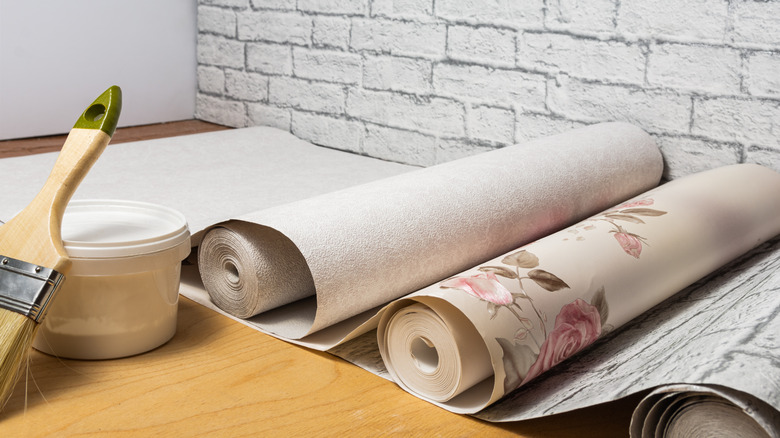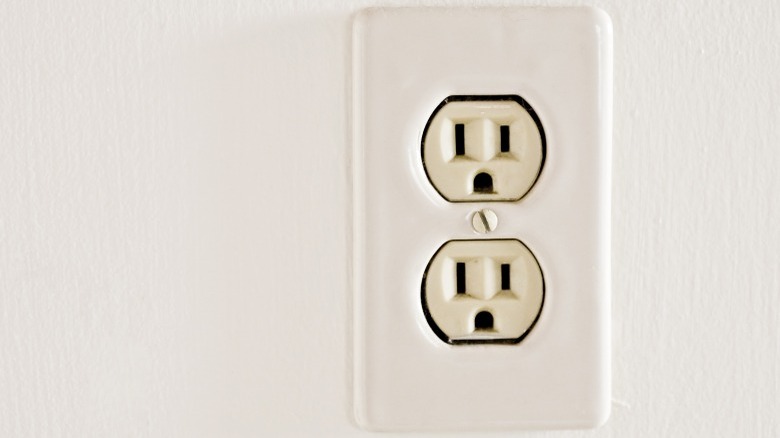The One Spot On Your Wall That You're Forgetting To Wallpaper
Compared to painting, adding wallpaper to a space can be a tedious DIY project, but it does have its upsides. According to HK Interiors, wallpaper outlasts paint by a landslide. While the former needs to be touched up every two to five years depending on your household (if you have children or pets, it may be closer to three), the latter only needs replacing every 10 to 15 years. Paint is an okay choice, but wallpaper gives a room more personality and dimension.
Wallpaper can also make a small room seem larger if you choose the right print. Luckily, applying it isn't as difficult as it seems. After finishing the job, you probably think you're done ... or are you? There's a good chance you missed a spot on the wall where the wallpaper should be. It's not a common look, which is why it's often forgotten. So, what's missing? Let's take a look at the one spot you're overlooking.
Over the outlet
Let's face it: Electrical outlets can ruin the aesthetic of a room — and wallpapering yours will help it seamlessly blend into the wall. The key to achieving this look is ensuring the pattern lines up with the rest of the wall, says TikTok user Taylor MacLaskey (otherwise known as @houseoflaskey). If you neglect this step, you'll end up with a funky wallpaper job, which defeats the purpose of this project. To prevent any mishaps, take a piece of scrap paper and lay it over the outlet until it's lined up with the pattern on all sides.
After doing so, you're good to move on. Next, add hot glue or superglue to the front of the outlet, then place it onto the wallpaper and begin making cuts so it fits around the wall socket. MacLaskey suggests cutting the corners to get rid of any excess wallpaper, which would prevent it from lying flat on the outlet. It's also important to remove any where the screws will be. After cutting the wallpaper to properly fit the wall plate, tape it in place.
Worried about fire safety? Home Decor Bliss says as long as the outlet openings aren't covered, you shouldn't be concerned with sparking a fire. However, it's crucial to double-check your wrapping job, and if you notice the wallpaper is covering the openings, make the proper alterations.

